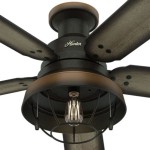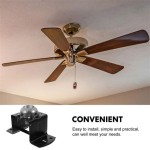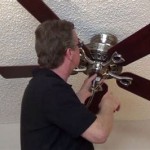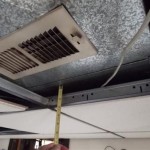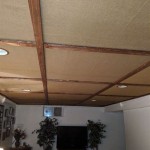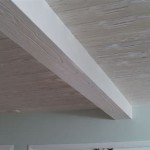How to Remove Water Stain From Textured Ceiling
Water stains on textured ceilings are a common household problem, often indicating a past or present leak. These stains are not only unsightly but can also be a sign of underlying structural issues. Addressing the stain promptly and effectively is crucial to prevent further damage and maintain the integrity of the ceiling. The process requires careful assessment, appropriate tools, and a measured approach to avoid exacerbating the problem.
Before attempting any stain removal, it is paramount to identify and rectify the source of the water leak. Ignoring this step will render any cleaning efforts futile, as the stain will inevitably reappear. Potential sources include roof leaks, plumbing issues in the floor above, or condensation problems in poorly ventilated areas. Inspect the attic space above the stained area for any signs of water damage, such as damp insulation or watermarks on the rafters. For plumbing concerns, consult a qualified plumber to identify and repair any leaks in the pipes.
Once the leak is resolved, the focus shifts to removing the existing water stain. The complexity of the task depends on the severity of the stain, the type of texture applied to the ceiling, and the age of the stain. Fresh stains are generally easier to remove than older, deeply ingrained stains. Furthermore, the texture itself can present challenges, as some textures are more porous and absorbent than others.
Assessing the Damage and Gathering Supplies
A thorough assessment of the water stain is the first step in the cleaning process. Observe the size, color, and depth of the stain. Note the type of texture on the ceiling; common textures include popcorn, knockdown, and orange peel. This information will help determine the appropriate cleaning method and the necessary supplies. Light, recent stains may only require gentle cleaning, while older, darker stains might necessitate more aggressive techniques, potentially including priming and repainting.
Gather the necessary supplies before beginning the removal process. Essential items include:
- A vacuum cleaner with a brush attachment
- A soft-bristled brush or sponge
- Mild detergent (dish soap or specialized ceiling cleaner)
- Warm water
- A spray bottle
- Clean cloths or rags
- Eye protection (goggles)
- Gloves
- Primer (stain-blocking primer is recommended)
- Ceiling paint (matching the existing color and sheen)
- A small paintbrush or sponge applicator (for textured ceilings)
- Drop cloths or plastic sheeting to protect the floor
- A step stool or ladder for safe access
Safety precautions are crucial during this process. Always wear eye protection to prevent cleaning solutions or debris from entering the eyes. Gloves will protect the hands from harsh chemicals and potential irritants. If working at height, ensure the step stool or ladder is stable and secure. Adequate ventilation is also important, especially when using cleaning solutions or paint. Open windows or doors to allow for airflow.
Cleaning the Water Stain
The initial step is to remove any loose debris or dust from the stained area. This can be achieved using a vacuum cleaner with a brush attachment. Gently vacuum the affected area to prevent further spreading of the stain. Avoid applying excessive pressure, as this could damage the texture.
Next, prepare a cleaning solution using mild detergent and warm water. A few drops of dish soap in a bucket of warm water is usually sufficient. Alternatively, a specialized ceiling cleaner can be used, following the manufacturer’s instructions. Test the cleaning solution on an inconspicuous area of the ceiling before applying it to the stain. This will ensure that the solution does not damage or discolor the texture.
Lightly dampen a soft-bristled brush or sponge with the cleaning solution. Gently blot the stained area, working from the outside edge towards the center. Avoid scrubbing, as this can further damage the texture and spread the stain. Apply light pressure and allow the cleaning solution to sit for a few minutes. This will help to loosen the stain and facilitate its removal.
After allowing the cleaning solution to dwell, gently blot the area with a clean, damp cloth to remove any remaining residue. Repeat the blotting process with a dry cloth to absorb excess moisture. Allow the cleaned area to air dry completely. This may take several hours, depending on the humidity level.
If the stain persists after cleaning, a stronger cleaning solution or a different approach may be necessary. A solution of diluted bleach (one part bleach to ten parts water) can be used to treat stubborn stains. However, caution is advised, as bleach can discolor the ceiling and should be used sparingly. Always test the bleach solution on an inconspicuous area before applying it to the stain. When using bleach, ensure adequate ventilation and wear appropriate protective gear, including gloves and eye protection.
Another option is to use a stain remover specifically designed for ceilings. These products are typically available at hardware stores and home improvement centers. Follow the manufacturer’s instructions carefully when using these products. It is essential to choose a stain remover that is compatible with the type of texture on the ceiling.
Priming and Painting the Ceiling
If cleaning alone is insufficient to remove the water stain, priming and painting the ceiling may be required. This involves applying a stain-blocking primer to the affected area, followed by a coat of ceiling paint that matches the existing color and sheen. Priming is essential to prevent the stain from bleeding through the new paint.
Before priming, ensure that the cleaned area is completely dry. Apply a stain-blocking primer to the stained area using a small paintbrush or sponge applicator. Choose a primer specifically designed for stain blocking, as these primers contain ingredients that prevent stains from migrating through the paint. Apply the primer in thin, even coats, following the manufacturer’s instructions. Allow the primer to dry completely before proceeding to the next step.
Once the primer is dry, apply a coat of ceiling paint that matches the existing color and sheen. It is crucial to match the paint accurately to ensure a seamless finish. If necessary, take a sample of the existing paint to a paint store for color matching. Apply the paint using a small paintbrush or sponge applicator, using the same technique as with the primer. Apply the paint in thin, even coats, following the manufacturer’s instructions. Allow the paint to dry completely before applying a second coat, if necessary.
For textured ceilings, special attention is required during the painting process. To replicate the existing texture, a sponge applicator or a textured paint roller can be used. Alternatively, a specialized texture-matching compound can be applied to the ceiling to recreate the texture. This requires some skill and practice to achieve a seamless match. It is advisable to practice on a piece of cardboard or scrap material before applying the texture-matching compound to the ceiling.
Once the paint is dry, carefully inspect the repaired area to ensure that the stain is completely covered and that the texture matches the surrounding ceiling. If necessary, touch up any areas that require additional attention. Clean up any paint splatters or drips immediately using a damp cloth.
After the removal and repair process, continued monitoring of the ceiling is necessary to ensure that the water stain does not reappear. Regularly inspect the ceiling for any signs of water damage, such as discoloration or dampness. If a new stain appears, promptly investigate the source of the leak and take steps to address it.
Preventive measures can also help to reduce the risk of future water stains. These include regular roof inspections, proper maintenance of plumbing systems, and adequate ventilation in bathrooms and other high-humidity areas. Addressing potential problems early on can prevent costly repairs and maintain the integrity of the ceiling.

Popcorn Ceiling How To Remove An Ugly Stain Drywall Repairman Water Damage Repair

Super Easy Way To Remove Water Stains From Ceilings Without Paint 1 Step Abbotts At Home

Patch A Water Stained Ceiling Or Textured Diy Family Handyman

What Should I Do About Water Stains On A Popcorn Williams Painting

Patch A Water Stained Ceiling Or Textured Diy Family Handyman

How To Fix Ceiling Water Stains Kilz Stain Blocker

How To Re Stucco Your Ceiling If There Is A Water Stain Hpt

How To Fix Water Damage On Popcorn Ceilings

How To Fix Water Damage On Popcorn Ceilings

Patch A Water Stained Ceiling Or Textured Diy Family Handyman
Related Posts

